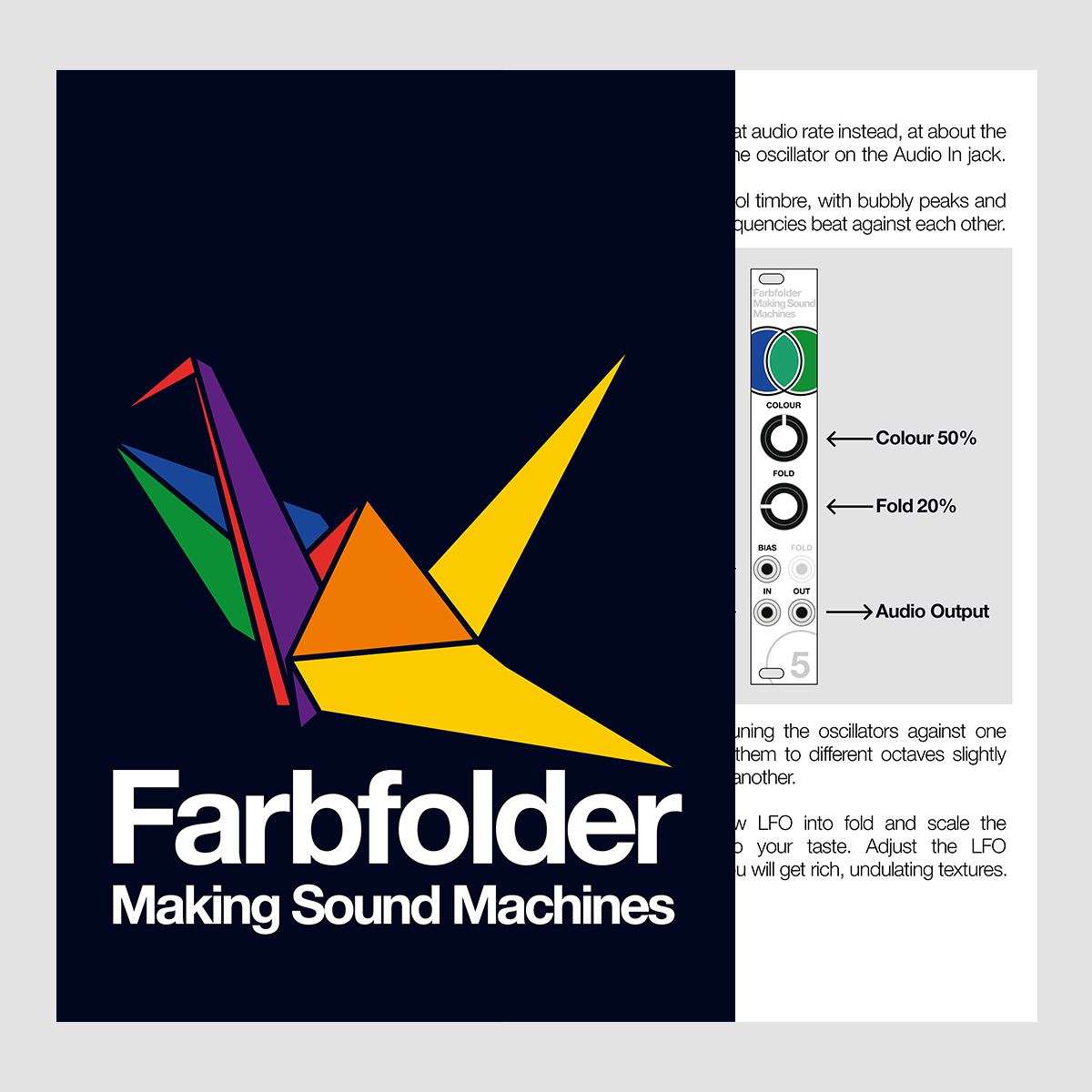Farbfolder – Manual
Analog Wavefolder for adding harmonically related overtones
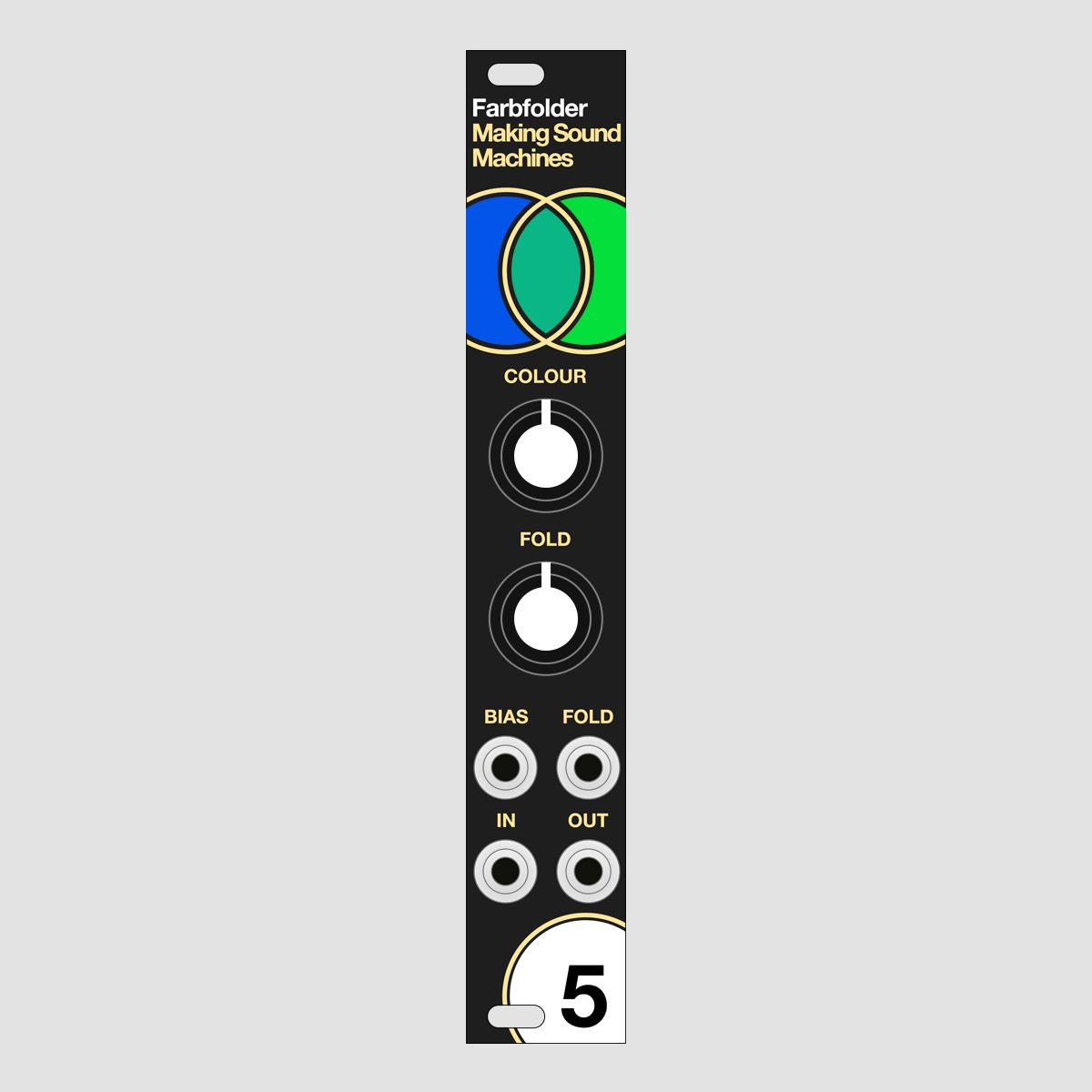
Farbfolder is an analog wavefolder for Eurorack, designed to add harmonically related overtones to an audio signal.
We have always been fascinated with analogue effects circuits, and we love the way their quirks and nonlinearities inspire us to find new sounds.
Farbfolder does this weird and wonderful trick of folding up the wave at the zero points, "squaring" a sine off with more and more sinusoid edges, thus adding odd harmonics.
This module is excellent at adding rich harmonics to a basic waveform. Its circuit can produce characteristic timbres similar to pulse-width and frequency modulation.
It is part of our Farbfilter (colour filter) range of sound colouring modules, offering a wide sonic palette from lending subtle colour to rich timbre bending tones in 4HP.
Quickstart Guide#
You are reading the Farbfolder web manual, which takes an in-depth look at the ideas behind the module.
Farbfolder comes with a printed quickstart guide as well. Here you can find the PDF.
Connect to power#
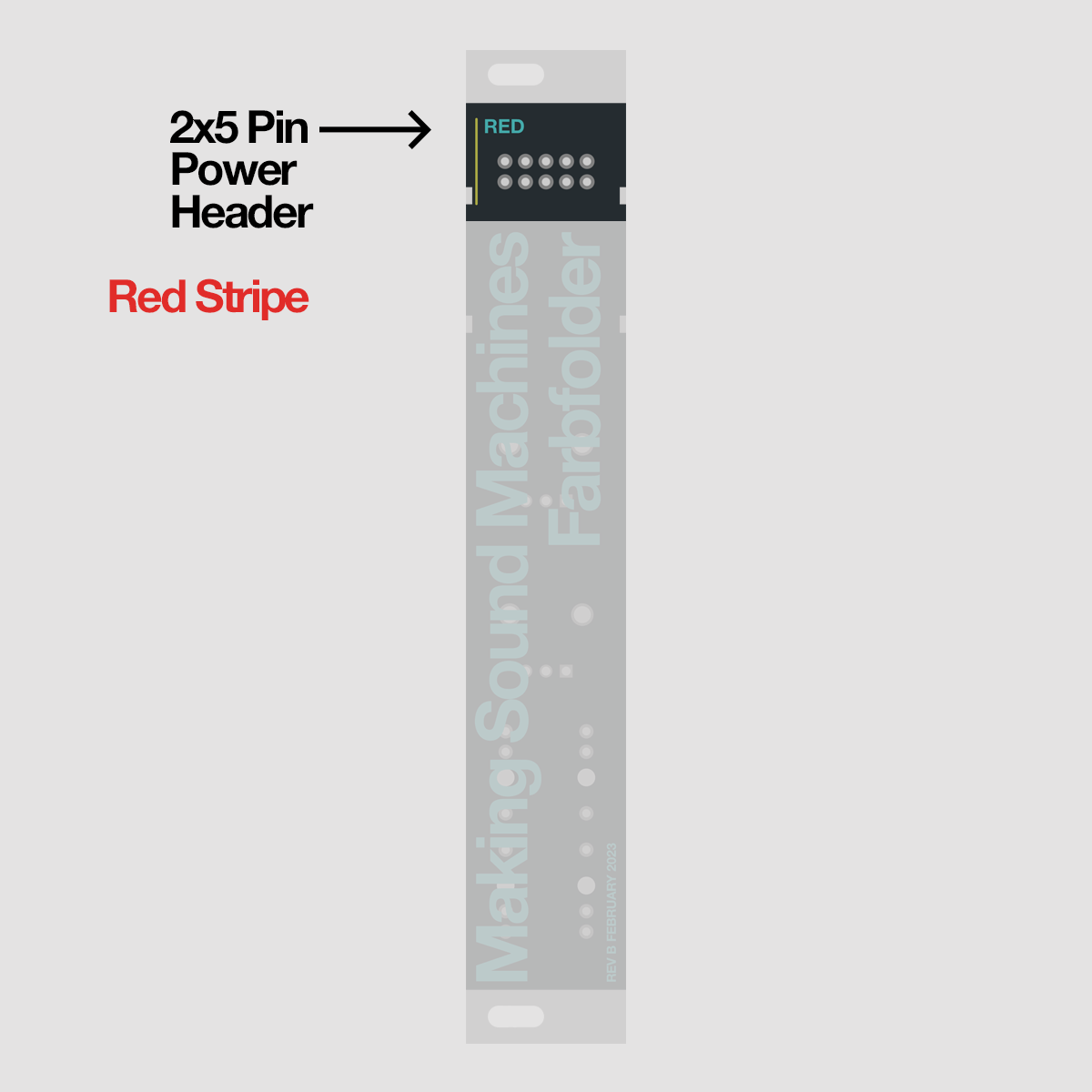
Farbfolder requires a -12V / +12V Eurorack power supply. Connect the 2x5 pin header on the back to the bus board of your Eurorack case using the included ribbon cable.
The red stripe on the ribbon cable needs to match the Red Stripe mark on both Farbfolder and bus board.
The power consumption is: +12V 70 mA / -12V 25 mA
Audio In + Out#
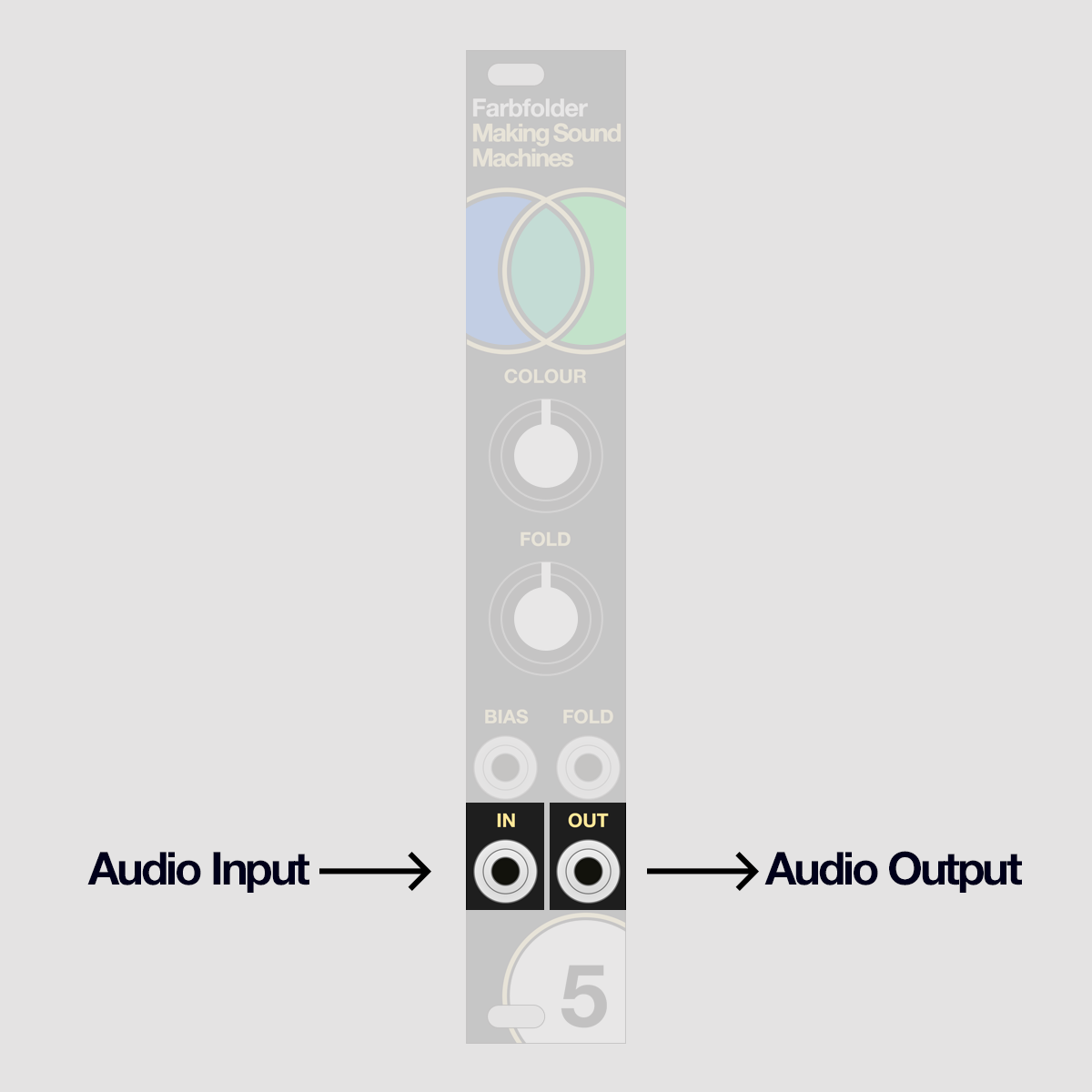
Patch an audio signal into the Audio In jack. You will find it on the bottom left of the module.
The Audio input expects a -5V /+5V range.
The Audio Out jack, on the bottom right of the module, provides the processed output signal.
Colour#
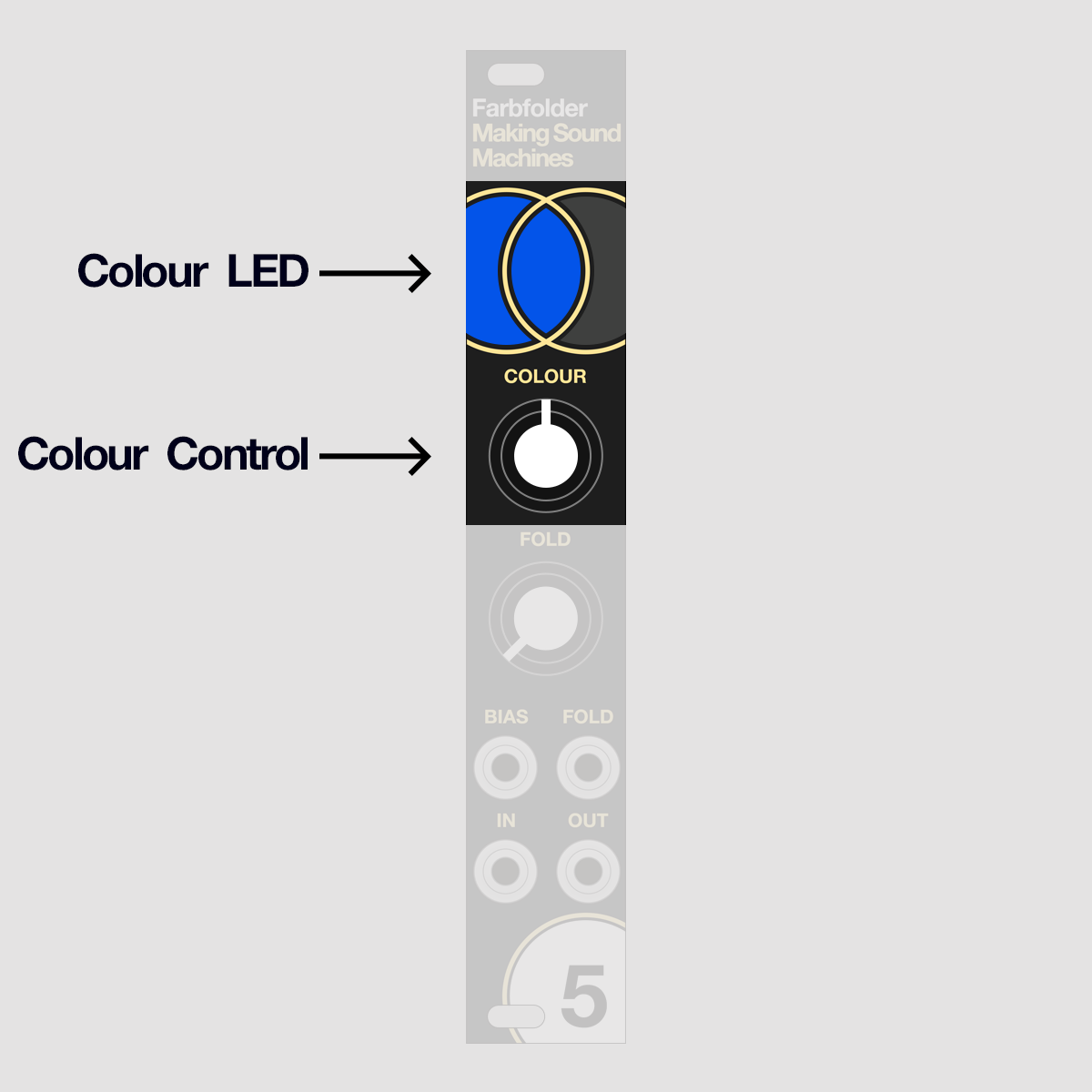
Turn the Colour knob to sweep through the overtone spectrum of the incoming audio signal.
Farbfolder specifically produces odd harmonics - the third, fifth, ninth, eleventh and thirteenth overtone.
Fold#
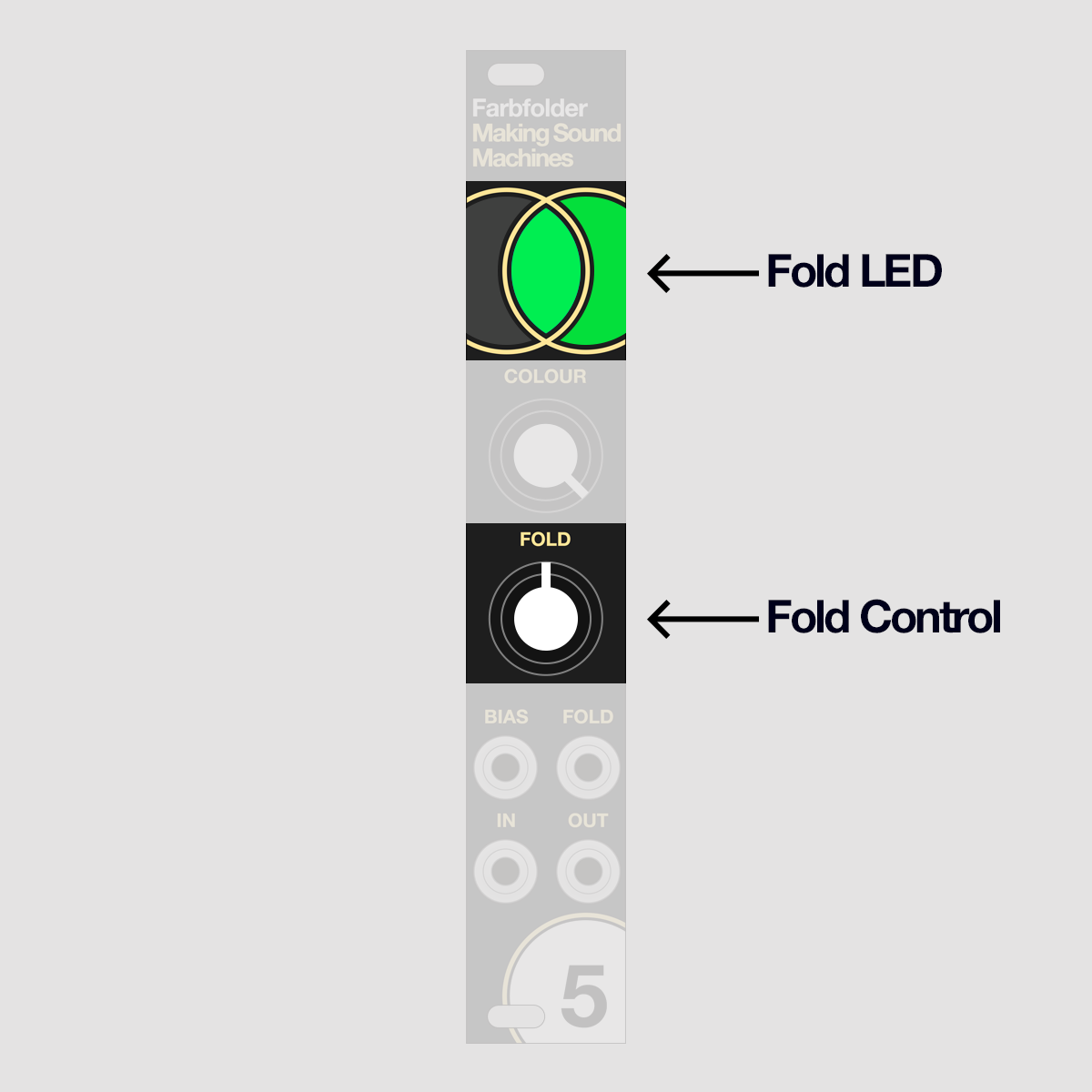
Turn the Fold knob to add even more harmonic content, extending the range into an altogether brighter spectrum.
The Colour and Fold parameters build onto each other. Imagine this as setting a baseline using Colour, and then adding Fold on top.
Fold CV#
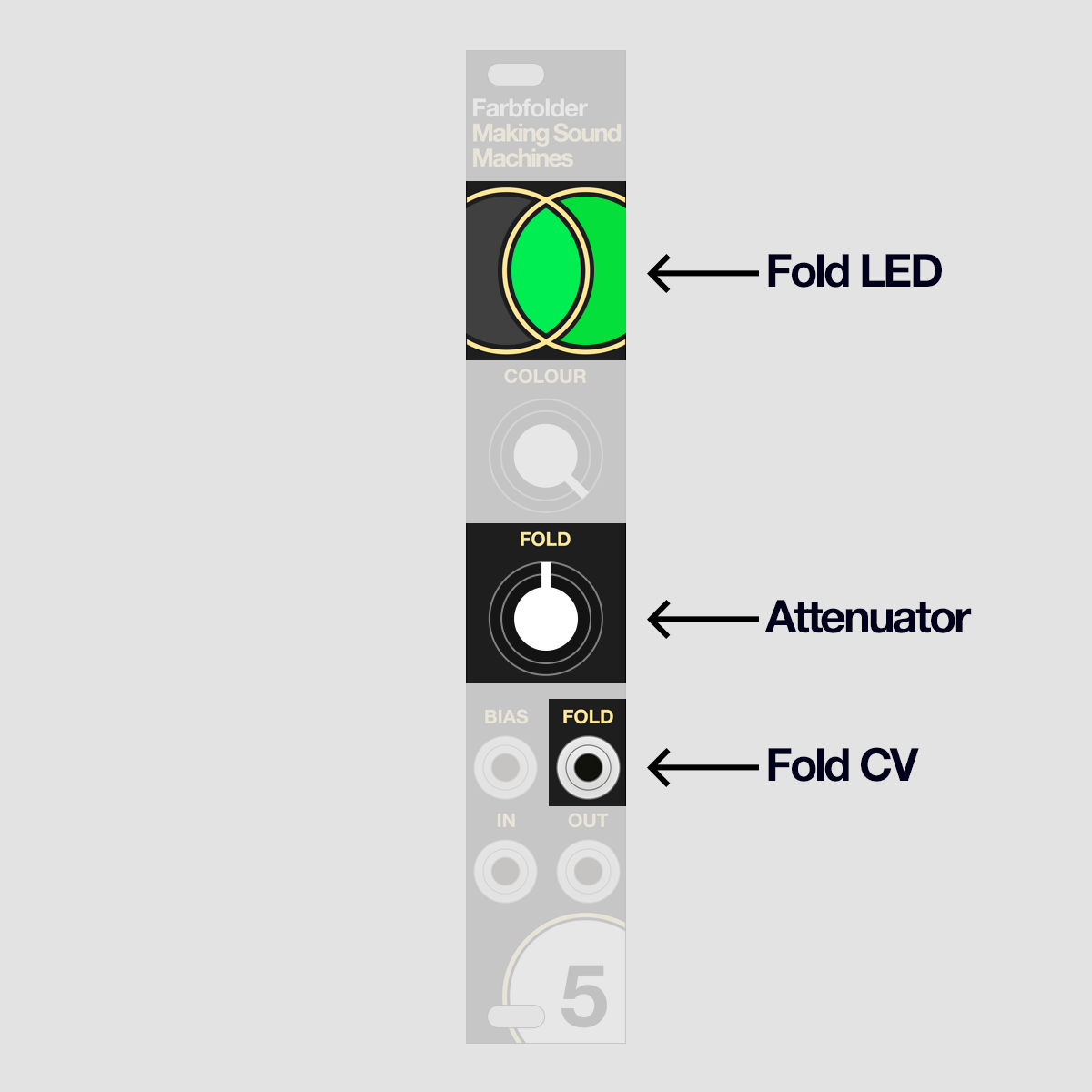
Fold comes with a CV input (top right jack).
If a signal is present here, the Fold knob becomes an input attenuator.
Patch an envelope or LFO into this input to produce vividly animated timbre changes.
The Fold input accepts a 0 - 10V range.
Bias CV#
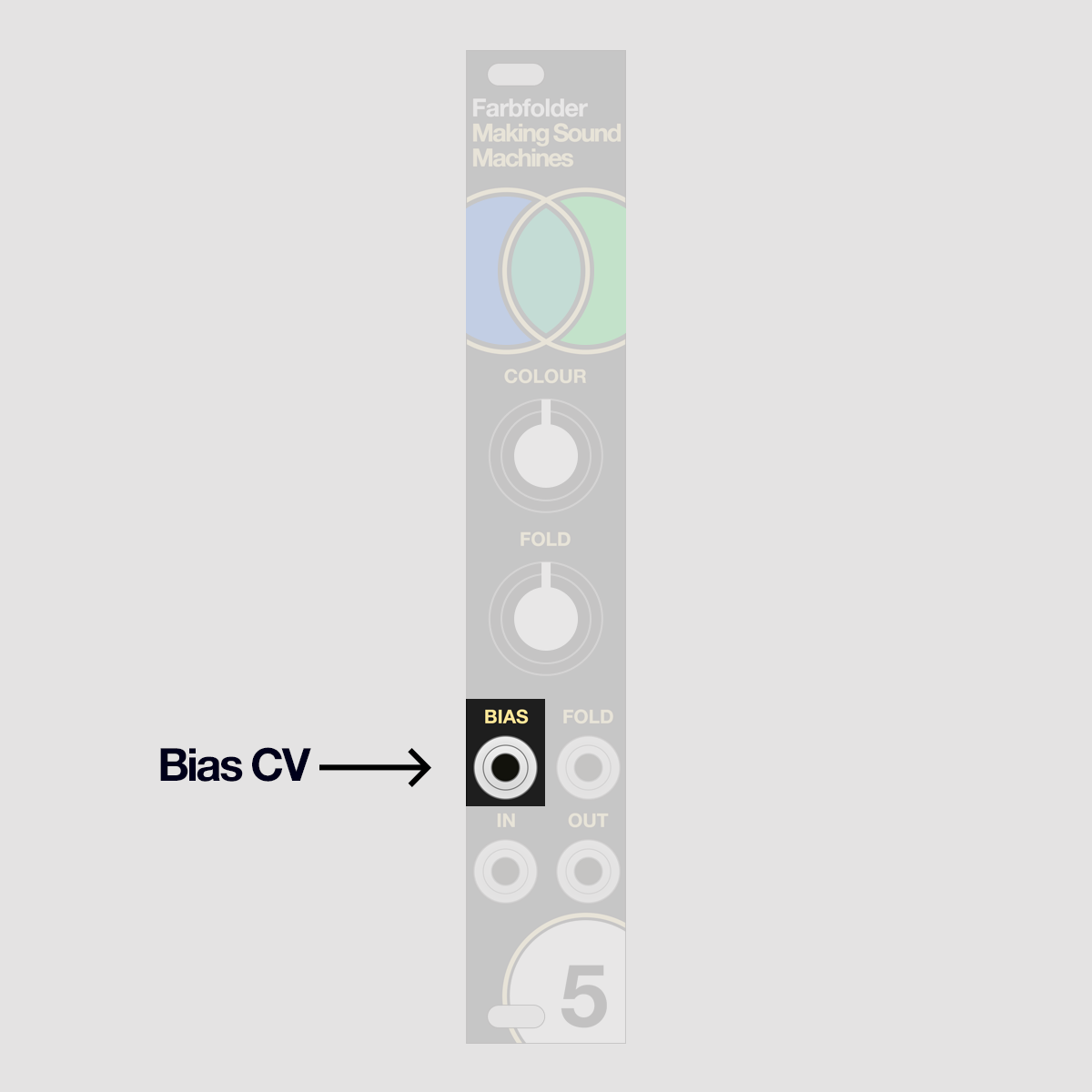
Using the Bias input (top left jack), you can offset the signal on the audio input by either a positive or negative voltage.
Use -10V /+10V CV from an LFO or envelope. Patching an Audio signal into this input will result in very cool FM-like timbres.
Getting Started
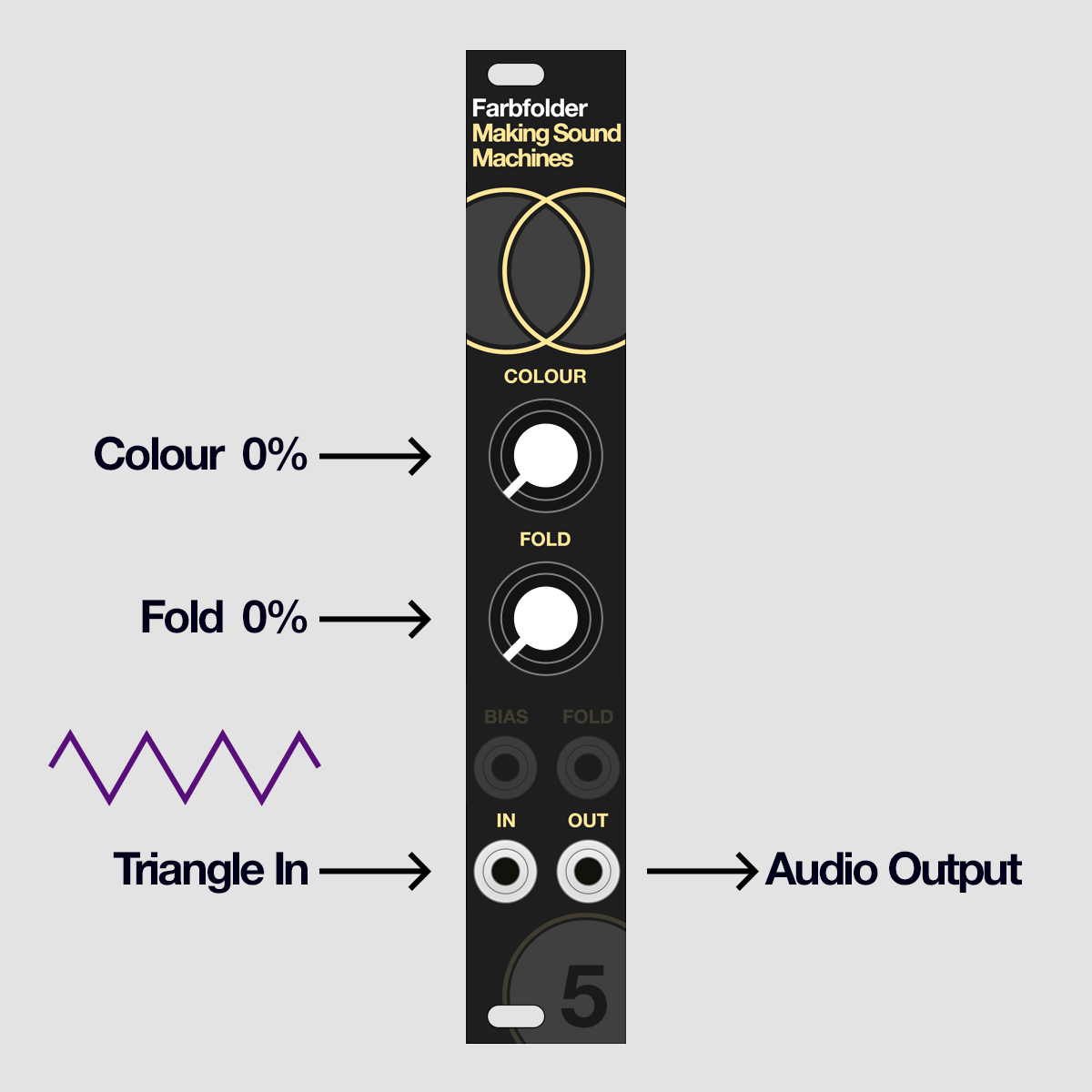
Turn the Colour and Fold knobs down (fully counterclockwise), and patch a triangle oscillator at around C2 (65.4 Hz) into the Audio In.
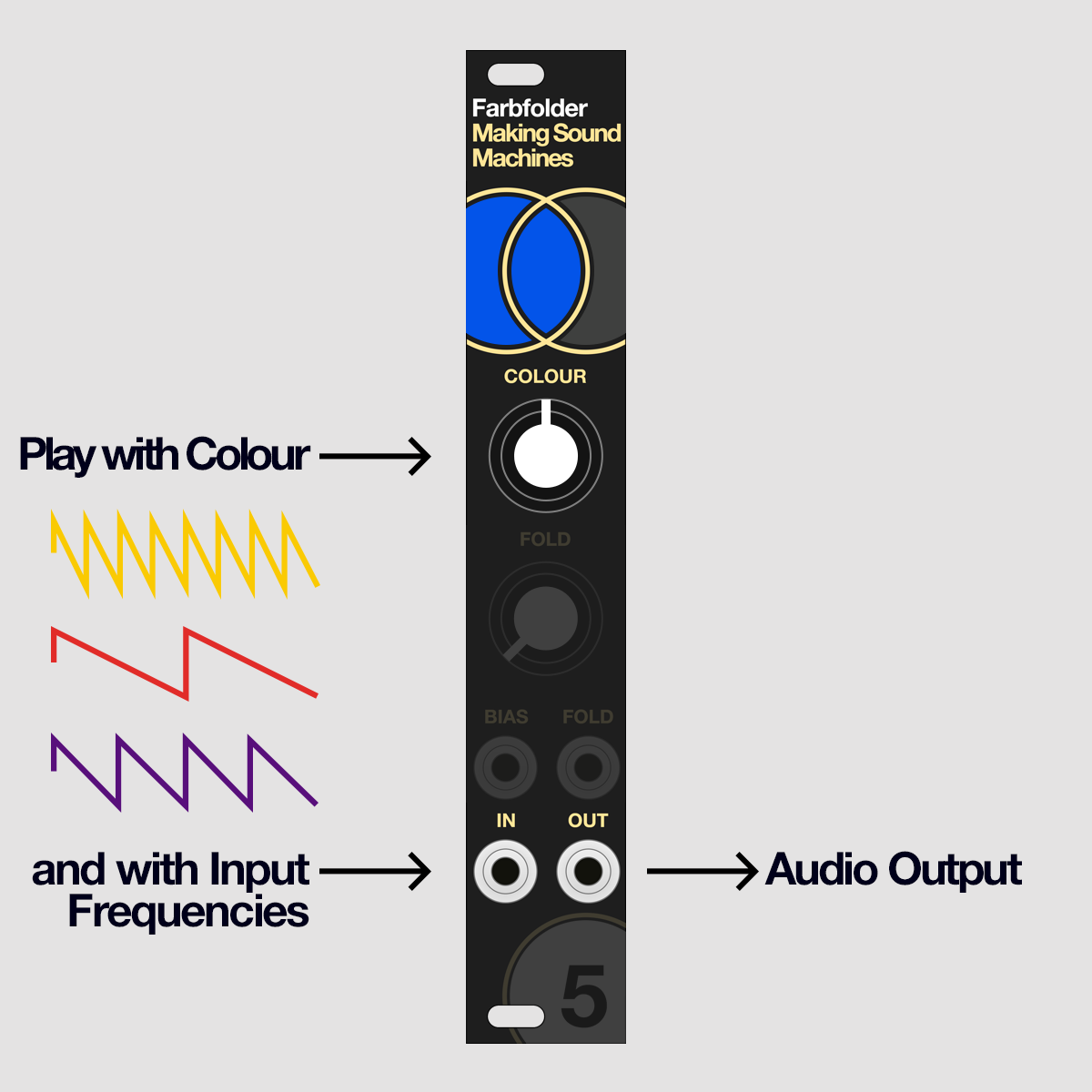
Sweep the Colour knob to progressively add overtones. You will get a very vocal, Didgeridoo-like timbre.
When you set the oscillator to lower octaves, the effect will sound less vocal.
In higher octaves you will start to get a phasing timbre.
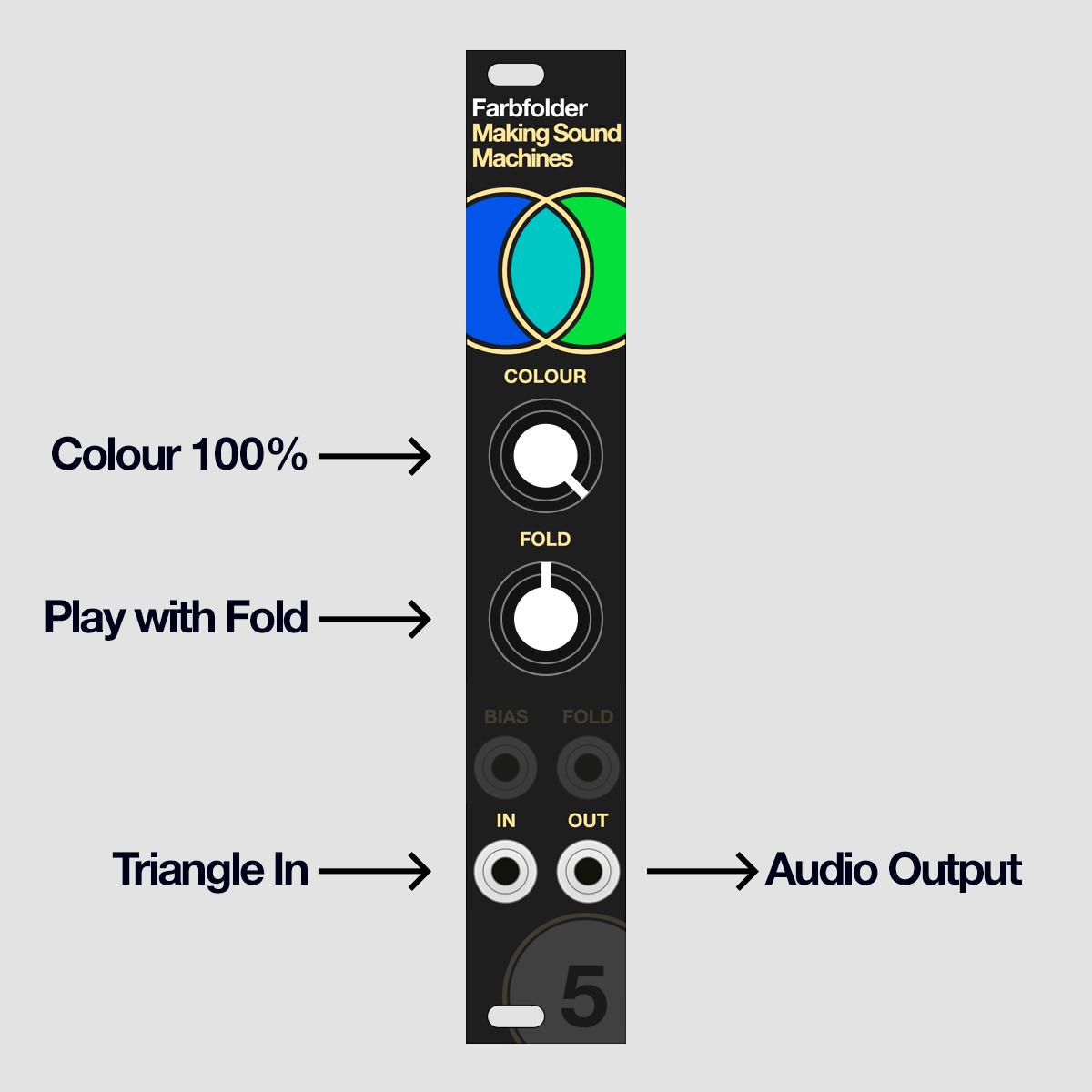
Turn the Colour knob all the way up. Sweep the Fold knob. You will add a range of much buzzier, brighter overtones.
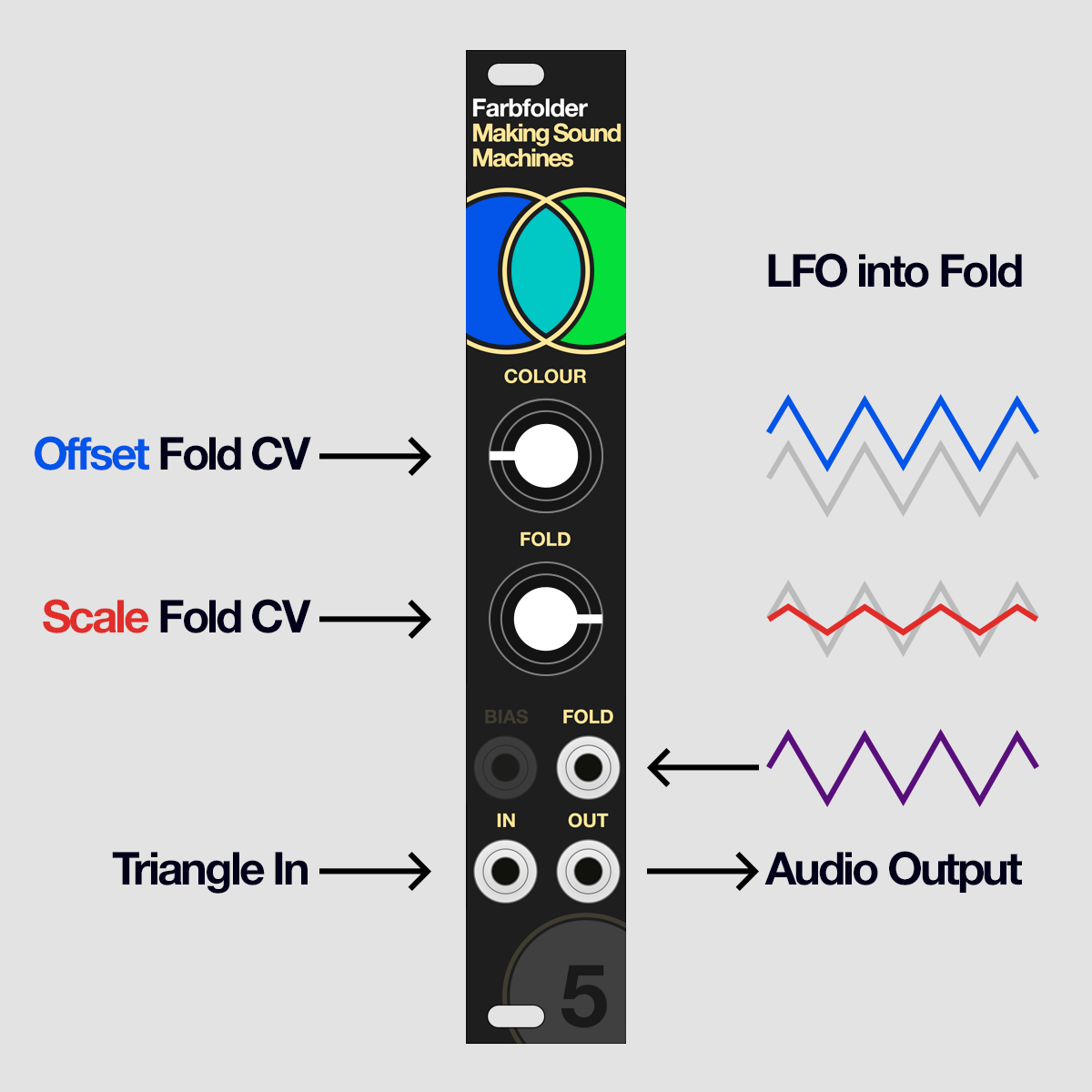
Patch an LFO into Fold CV. You can offset the LFO range using the Colour knob. Scale the LFO range using the Fold knob - all the way counterclockwise, you will hear no modulation.
Fold CV is a great point to patch a synth voice’s envelope to alter the timbre alongside the shape of the amplitude. This is a great alternative to a filter envelope.
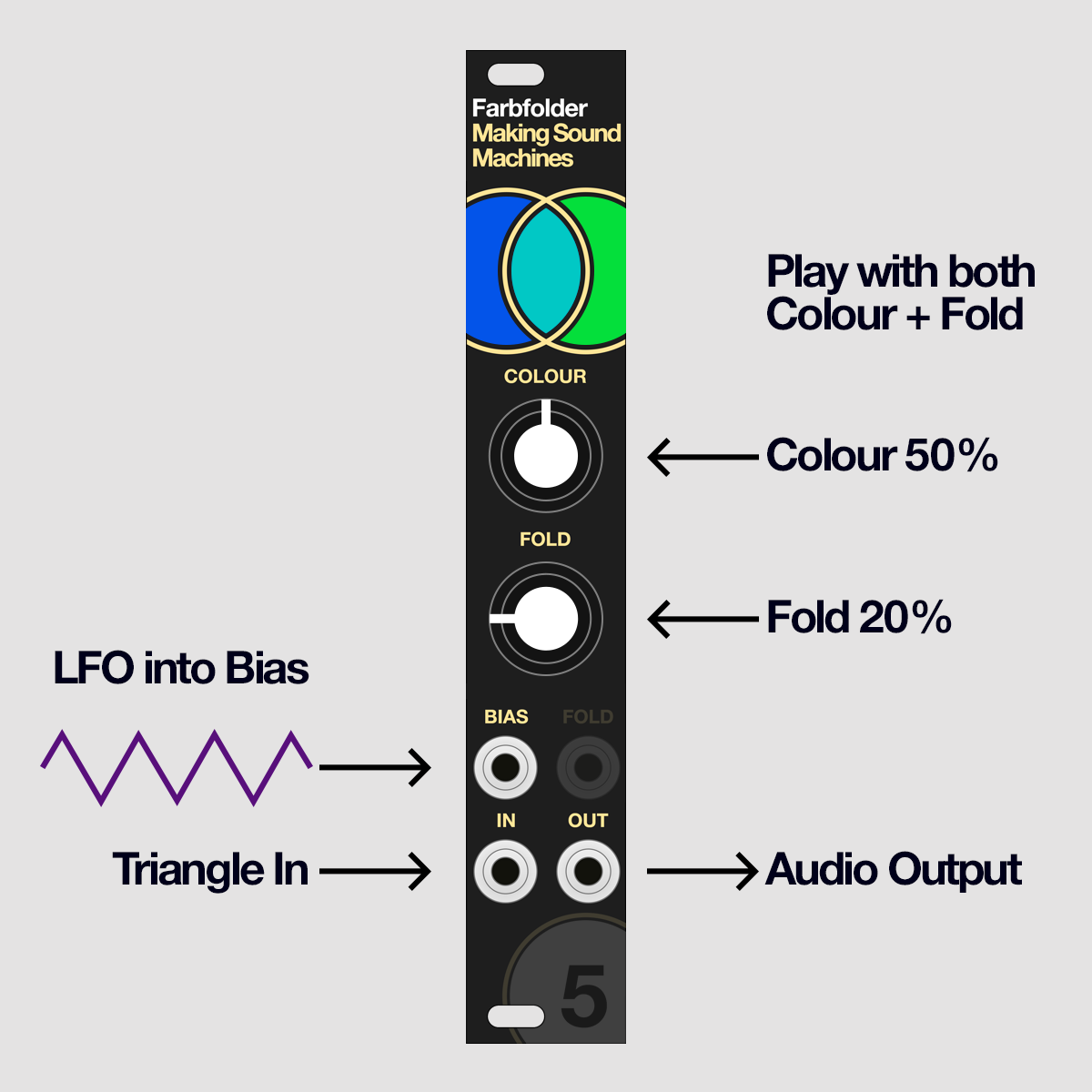
Unpatch Fold CV. Set Colour to 12 o’clock and Fold to 9 o'clock.
Feed a slow LFO into Bias CV. Experiment with Colour and Fold. There are regions at each end of the modulation range where the audio fades away.
This can be great to create rhythmic, gated sounds.
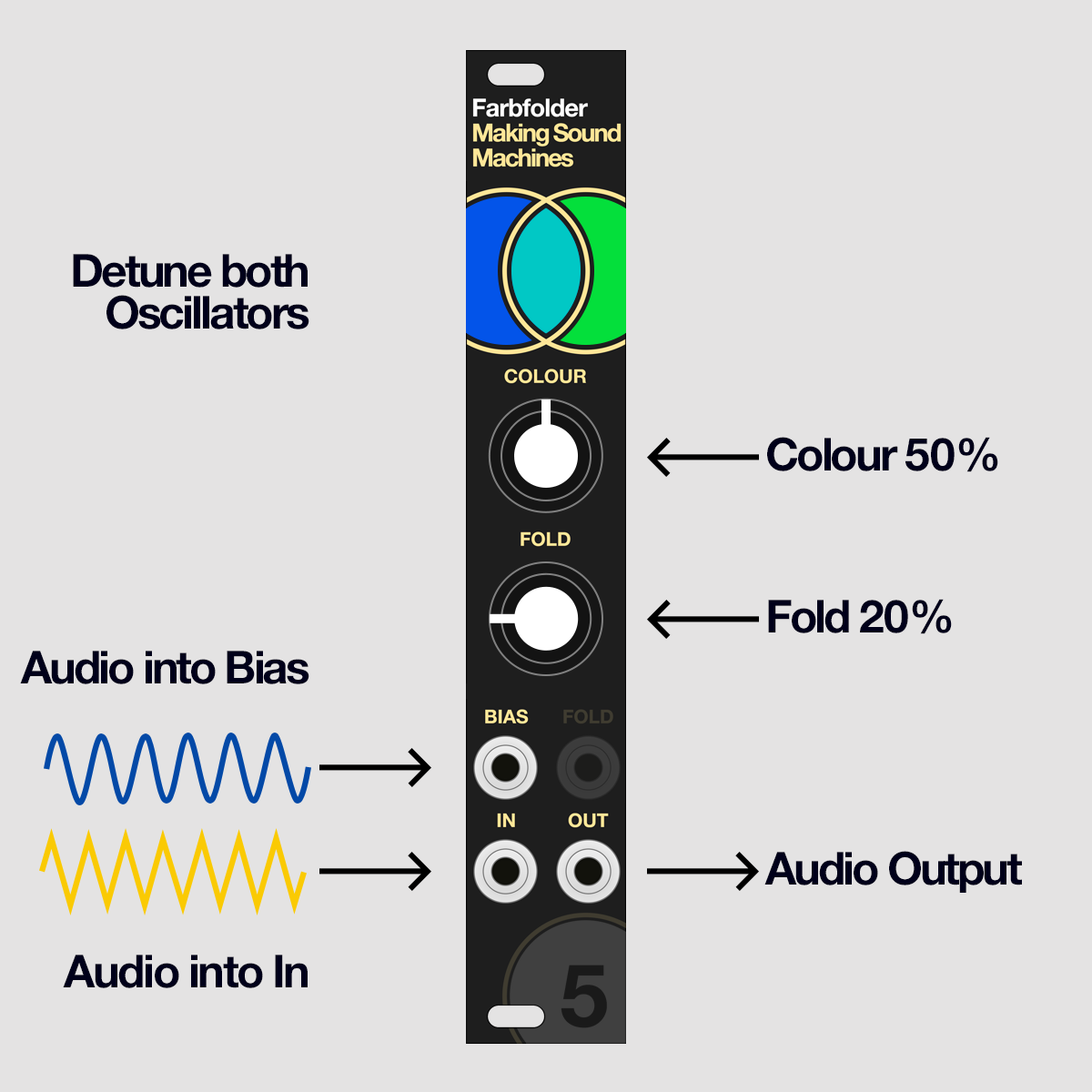
Patch a sine wave at audio rate into Bias CV instead. Experiment with detuning the oscillators against one another.
You will get a lively timbre with bubbly peaks and troughs where the frequencies beat against each other.

Finally patch a Sample and Hold into Fold CV and Bias CV at the same time.
You will get lively, constantly evolving timbres.
If you own two Farbfolder modules, or double track the same signal with a recording setup, this will make for a smashing stereo effect.
Explore#
We hope this short tutorial section has inspired you to start experimenting with your own settings and sonic material. Acoustic sounds and drum loops are an equally fascinating jumping off point to process with this module.
Enjoy Farbfolding - and if you make something you like, do not hesitate to share the results!
Thank you#
Thank you for your time, enthusiasm and care, sharing insights and advice.
Stijn and Priscilla – TiNRS This is Not Rocket Science Lauri – Vaski Embedded Manu – Befaco Ben – DivKid
The DIY community and the shops propelling synth DIY forward.
Steve, Will and Will – Thonk Manuel and Hagen – Exploding Shed Daniel and Madeleine – Mülheim Modular Joe Proswell – dsp.coffee
